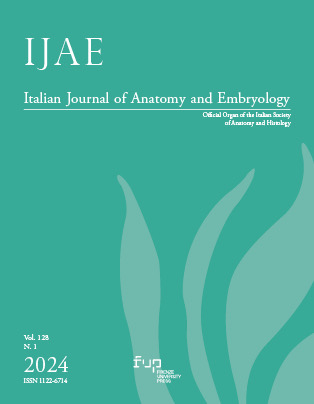A study of acromion morphology and morphometry in north indian population and its significance in subacromial impingement syndrome and rotator cuff tears
Published 2024-09-03
Keywords
- acromion,
- shoulder pain,
- shoulder impingement syndrome,
- subacromial impingement syndrome
How to Cite
Copyright (c) 2024 Ritika Sharma, Rajan Sharma, Rajan Kumar Singla, Jagdev Kullar

This work is licensed under a Creative Commons Attribution 4.0 International License.
Abstract
Introduction. The acromion process serves as a point of attachment for various muscles and ligaments and is a pivotal factor in the development of shoulder impingement syndrome and rotator cuff pathology. The study aims to evaluate the acromion process of dry human scapulae in residents of North India and understand the implications of these in relation to shoulder impingement syndrome and rotator cuff pathology. Material and Methods. The present study comprised of 100 adult scapulae of unknown sex obtained from Department of Anatomy, Government Medical College, Amritsar. The acromion process was studied for shape of tip of acromion, inferior surface, enthesophytes, os acromiale, acromial facet, maximum length, width, anterior thickness, distance between tip of acromion and coracoid. Results. The most common shape of tip was found to be intermediate. The most common shape of acromial facet observed was oval and it was more medially inclined. The inferior surface of acromion was rough in 79% bones. Enthesophytes were found in 16 bones which were more common in type II acromion and right side. Width, Length, Anterior Thickness, distance between tip of acromion and coracoid was found to be less on left side as compared to the right side. Discussion. The majority of the parameters were observed to be higher on the right side which proved to be significant for orthopedicians. Facts about the common variant and morphometric proportions of acromion process can support to improve understanding and preparation for the treatment of rotator cuff pathology due to the impingement syndrome.

